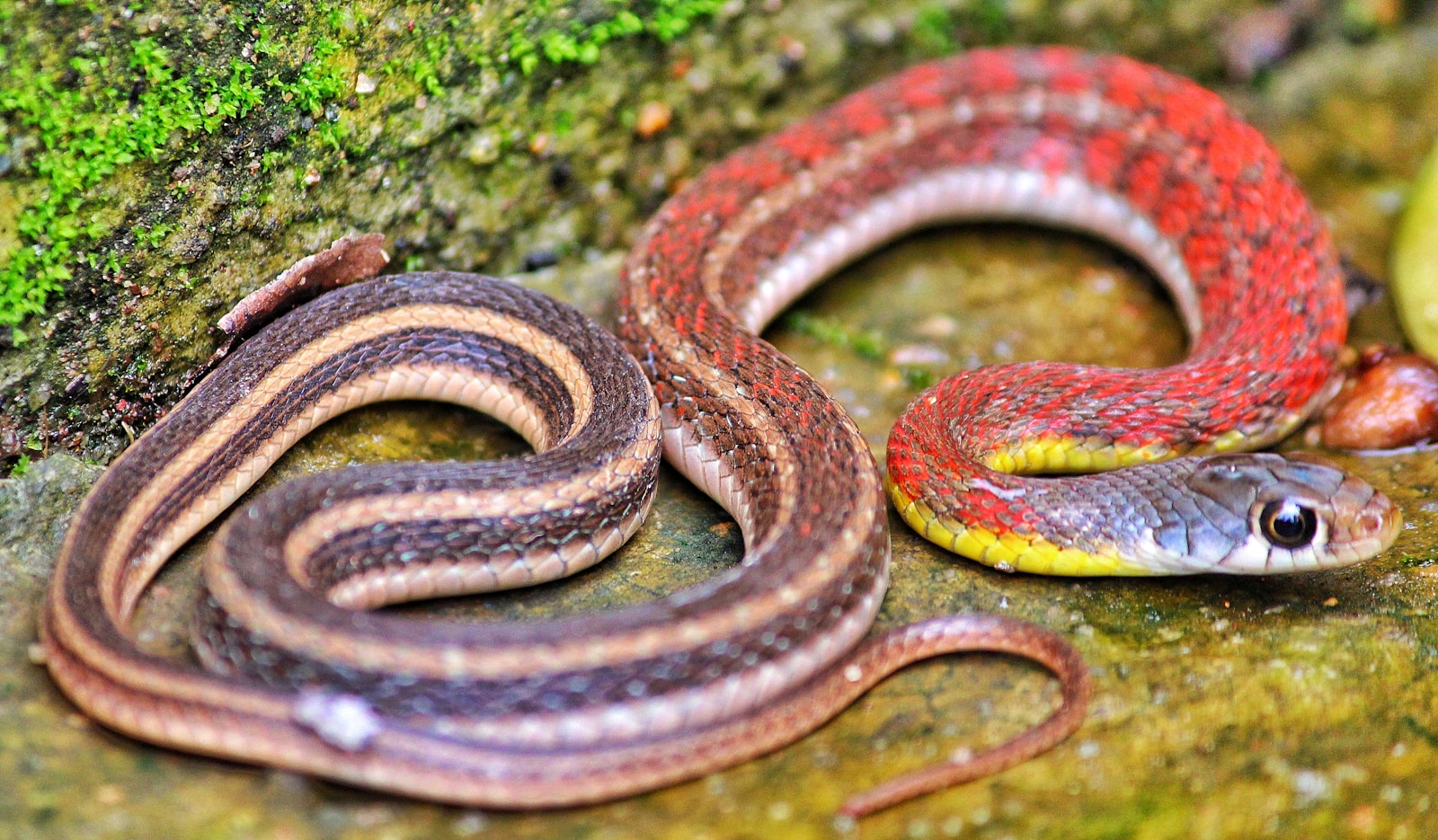
serpiente

snake
A snake is a carnivorous reptile with elongated, legless body. Snakes are found in diverse habitats ranging from terrestrial, aquatic, to arboreal. There are over 3,000 species of snakes.
Example sentences using: serpiente
Vi una serpiente en el río.

I saw a snake in the river.
Here, 'serpiente' is used within a personal experience. The sentence gives an example of the past tense verb, 'vi' (I saw).
La serpiente es verde.

The snake is green.
This is a simple sentence illustrating the use of the Spanish word for snake (serpiente) in a descriptive phrase. The sentence is following the structure 'Subject + Verb + Adjective'.
Esa serpiente parece peligrosa.

That snake looks dangerous.
This example shows how to use the word 'serpiente' in an observational sentence. It is talking about a specific snake that appears to be dangerous.
La serpiente se desliza por el suelo.

The snake slides on the floor.
Here, 'serpiente' is used in an action sentence describing the movement of the snake. This sentence introduces the verb 'deslizar' which means 'to slide'.
Me asusta la serpiente del jardín.

The snake in the garden scares me.
In this sentence, 'serpiente' is used within a confessional phrase. It introduces the phrase 'me asusta' which means 'scares me'.
La serpiente vive en la selva.

The snake lives in the jungle.
In this context, 'serpiente' is used in a factual statement regarding its habitat. It uses the Spanish word 'selva' for 'jungle'.
No me gustan las serpientes.

I do not like snakes.
This statement uses 'serpiente' in a negative context, expressing a dislike. 'No me gustan' means 'I do not like'.
El veneno de la serpiente puede ser mortal.

The snake's venom can be deadly.
The word 'serpiente' is used within a cautionary sentence here. It is introducing the noun 'veneno', which means 'venom'.
La serpiente cambia su piel.

The snake sheds its skin.
In this context, 'serpiente' is used in a factual statement discussing a natural process of snakes. It introduces the verb 'cambia', which means 'changes'.
He soñado con una serpiente blanca.

I have dreamed of a white snake.
This statement uses 'serpiente' in a narrative context, explaining a past event. The new verb introduced here is 'soñado', past participle of 'soñar' meaning 'to dream'.